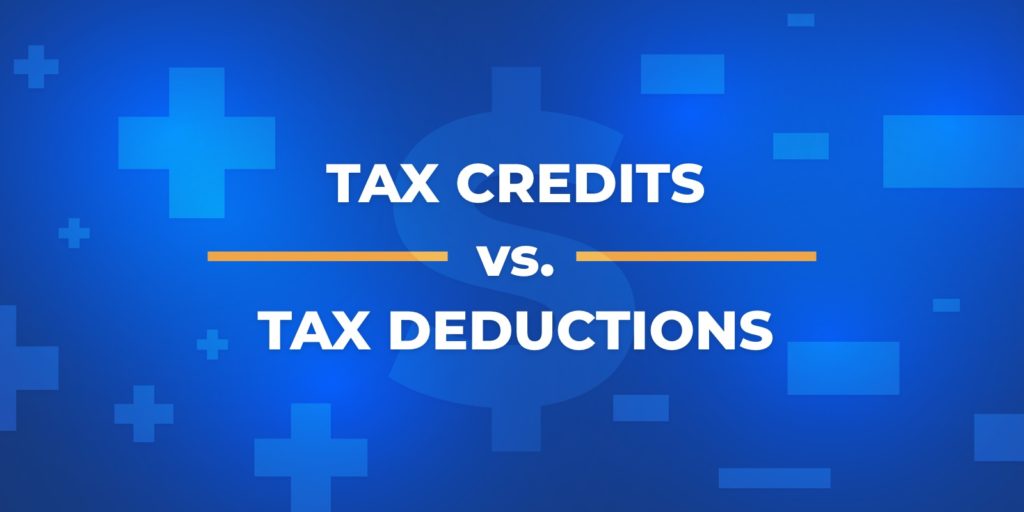
Tax season is officially here. As you prepare to file your tax return, it might be helpful to research ways to decrease your tax liability. A popular way to do this is to claim tax credits and tax deductions. While both can help reduce your overall tax liability, they operate in distinct ways. In this article, we’ll break down the fundamental differences between tax credits and tax deductions, helping you understand how each can impact your financial situation.
What is a tax credit?
A tax credit is a dollar-for-dollar reduction of your income. They are created by the federal and state governments to encourage certain behaviors that benefit the economy or environment. For example, there is a solar tax credit available to taxpayers who purchase solar panels for their home. In 2025, it’s worth 30% of your total solar installation cost through 2032. There is also a federal adoption tax credit that helps offset 50% of your adoption costs. These credits reward behaviors that the government deems beneficial to society.
How do tax credits reduce my tax bill?
As mentioned, a tax credit is a dollar-for-dollar reduction of your income. Let’s say your tax liability is $1,000 but you are eligible for a $750 tax credit. This would reduce your tax liability to $250. There are two main types of credits: refundable and nonrefundable. Refundable credits allow you to receive the full amount of the credit, even if it exceeds your tax liability. For example, if your tax bill is $1,000 and you claim $1,200 in refundable tax credits, you will receive a $200 refund. Nonrefundable credits do not have the same perk. If those same tax credits are nonrefundable, you would simply owe $0 and would not receive the additional $200 in your tax refund.
However, there is also a partially refundable tax credit that offers a sort of middle ground. This type of tax credit allows taxpayers to receive a refund for a portion of the credit amount even if the credit exceeds their tax liability. For example, the American Opportunity Tax Credit allows you to claim up to $2,500 for qualified education expenses. However, only $1,000 of the credit is refundable. This means you can either reduce your tax liability by $2,500 or receive up to $1,000 in a tax refund if your total liability is less than the credit amount.
What is a tax deduction?
A tax deduction is a reduction of taxable income to lower your tax bill. You can lower your tax bill through deductions using one of two methods: claiming the standard deduction or itemizing your deductions. The standard deduction is a fixed dollar amount determined by the IRS each year that can be subtracted from your taxable income. Itemizing your deductions is more work and requires substantiation. However, it allows you to deduct expenses like student loan interest, mortgage interest, retirement contributions, medical expenses, investment losses and more.
How do tax deductions reduce my tax bill?
Any taxpayer can claim the standard deduction. In fact, most taxpayers do because it results in a lower tax liability. The standard deduction for single filers is $15,000 in 2025. This means that if you are a single filer with a taxable income of $50,000, you can take the $15,000 standard deduction. Doing so would reduce your taxable income to $35,000. If you itemize deductions, you will need to tally up all your eligible expenses on Schedule A of Form 1040. This typically only makes sense to do if you have enough expenses to exceed the standard deduction.
For example, if last year you had a lot of medical expenses, paid a lot of mortgage interest, or incurred disaster losses that were not insured, itemizing might be the best option for you. Finally, there is something called an above-the-line deduction, which is essentially a deduction that you can take to decrease your tax bill even further after taking the standard deduction. You can calculate these using Schedule 1 on Form 1040. Some examples are retirement contributions, HSA contributions, self-employment tax, health insurance premiums for self-employed, business expenses, and student loan interest.
Tax Relief During Tax Season
The bottom line is that both tax credits and deductions can help lower your tax bill. Many taxpayers may wonder which is better. Tax credits have a slight edge since they directly reduce taxes dollar-for-dollar whereas tax deductions will depend on your marginal tax bracket. Understanding these differences is crucial for effective tax planning and optimizing your financial situation. Figuring out how to file your return yourself can be tricky and intimidating. Consider consulting with a tax professional to ensure you take full advantage of available deductions and credits based on your unique circumstances. Our team of qualified and dedicated tax professionals can help.
If You Need Tax Help, Contact Us Today for a Free Consultation